
Gold-copper ore beneficiation methods commonly used in actual production include flotation, gravity separation, electrolytic precipitation, volumetric extraction, magnetic separation, etc. The types of ores applicable to each method are also different. The gold-copper ore beneficiation methods will be introduced below by heap leaching and magnetic separation.
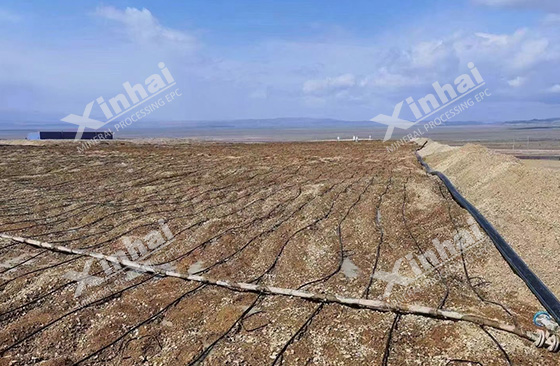
(Heap leaching method)
Heap leaching is a common method for extracting gold from low-grade gold-copper ores. The ore is crushed and stacked into piles, then impregnated with a solution that dissolves the gold. The resulting gold-containing solution is collected and processed to recover the gold.
First, the gold-copper ores are crushed into appropriate particle sizes and stacked in special open-air stacking areas. Next, the accumulated ore is regularly or continuously sprayed with a leaching solution containing specific chemicals. For gold minerals, a commonly used leach solution is a solution containing cyanide, while for copper minerals, a leach solution containing sulfuric acid may be used. The leach solution seeps into the ore pile, reacting with the gold and copper minerals within it, and the gold and copper dissolve from the ore into the leach solution. After leaching is completed, the leachate containing dissolved gold and copper is collected in a sump or other container at the bottom.
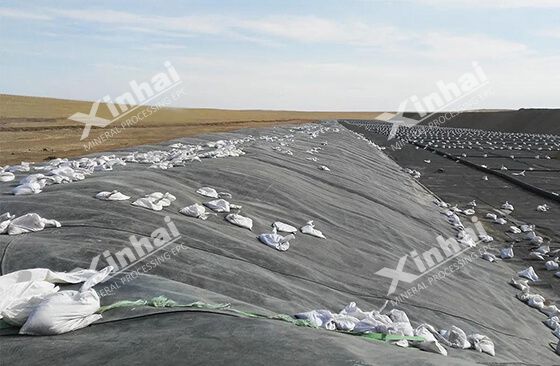
(Heap leaching site)
The separation and recovery of gold and copper from the leachate often requires further processing. For gold, a common method is to use electrolytic deposition to recover gold from the leachate. For copper, methods such as electrolytic refining or solvent extraction are usually used.
1. Electrolytic refining: A method used to purify copper, often called electrolytic refining of copper. First, prepare an electrolytic tank and add an electrolyte containing copper, usually a copper sulfate solution, to the electrolytic tank. This electrolyte acts as an ionophore, helping to transport copper ions between the electrodes. By passing an electric current, copper ions move from the anode to the cathode. During this process, copper ions are reduced to pure copper metal and precipitated on the cathode. Impurities in copper can be removed, making the copper purer. These impurities often form scum or become trapped at the anode.
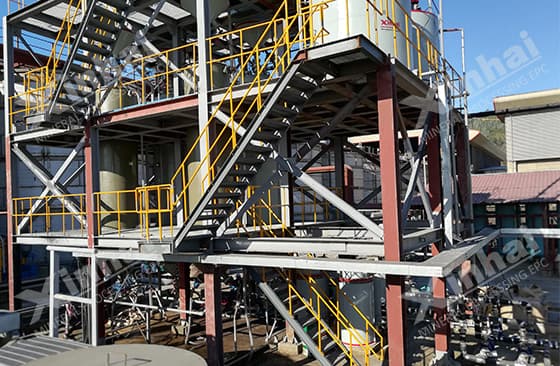
(Electrolysis system)
2. Electrowinning: An electrochemical process for recovering precious metals such as gold from solution. Similar to electrorefining, electrowinning requires an electrolytic cell containing an anode and a cathode for the purpose of depositing gold from a solution. An electrolyte containing gold, usually a solution containing cyanide, is added to the electrolytic cell. When an electric current is passed through, gold ions are deposited from the electrolyte onto the cathode, forming metallic gold, mainly high-purity gold.
3. Solvent extraction is an important process used to separate and purify copper from copper-containing solutions. First, you need to prepare a copper sulfate (copper sulfate) solution. In the extraction stage, the copper sulfate solution is in contact with a specific organic solvent, which can better absorb copper ions. The organic solvent containing copper passes through the solution containing other impurities and non-copper metals. Separate by sedimentation, centrifugation or other separation methods. The copper ions in the organic phase can be released by changing conditions such as acidity or temperature, and further reduced to pure copper metal. The organic solvent can be recovered and reused, to improve the economic efficiency of the process.
Heap leach tailings contain most of the unextracted impurities beyond the gold and copper that have been extracted and require further processing or storage to reduce environmental impact. Heap leaching is relatively low-cost and suitable for low-grade ores. However, it takes a long time to extract gold and copper and is not suitable for high-grade ore or rapid recovery of gold and copper.
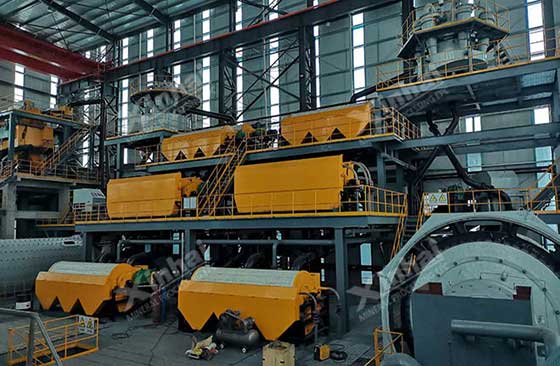
(Magnetic separation equipment)
Magnetic separation of gold and copper minerals is a physical separation method used to remove iron minerals and other iron impurities from ores containing gold and copper. This process relies on differences in magnetic properties between different minerals, as iron minerals are typically magnetic while gold and copper minerals are not.
First, the gold and copper ores are broken into appropriate particle sizes and refined through a grinding process that helps release gold and copper minerals as well as iron minerals. The ore is then fed into a device such as a magnetic separator or magnetic drum, which generates a magnetic field to attract magnetic iron minerals, while gold and copper minerals are not attracted. Iron minerals adsorbed on magnetic surfaces are usually collected as magnetic slag, while gold and copper minerals are left in the non-magnetic fraction. Magnetic slag often requires further processing or disposal to recover valuable minerals. Non-magnetic products containing gold and copper minerals can proceed to other beneficiation or metallurgical processes to extract and purify gold and copper.
Magnetic separation is typically used to process ores containing high amounts of iron minerals, such as magnetite or hematite, and ores containing gold and copper minerals. This process helps remove interference from iron minerals and improves the grade of gold-copper minerals.
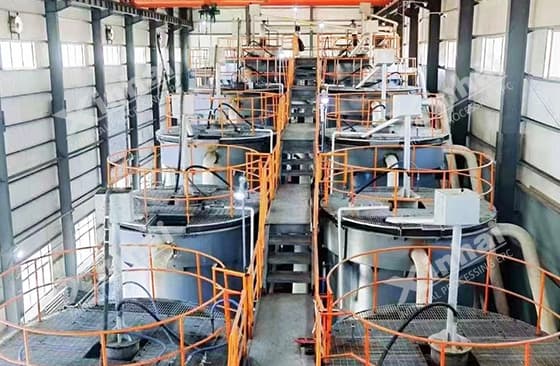
(Gold Mine Concentrator)
The above are the heap leaching and magnetic separation of gold-copper ore beneficiation. According to actual production requirements, choosing a suitable mineral processing method can improve production efficiency. Sometimes it is necessary to combine several mineral processing methods for processing. The combination and selection of mineral processing methods should be based on factors such as ore characteristics, economic benefits, product requirements, and environmental protection.
To find out more about our products and solutions, please fill out the form below and one of our experts will get back to you shortly.